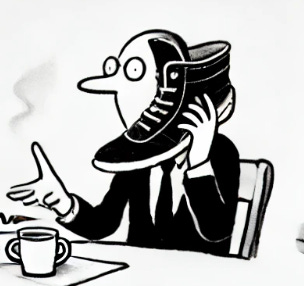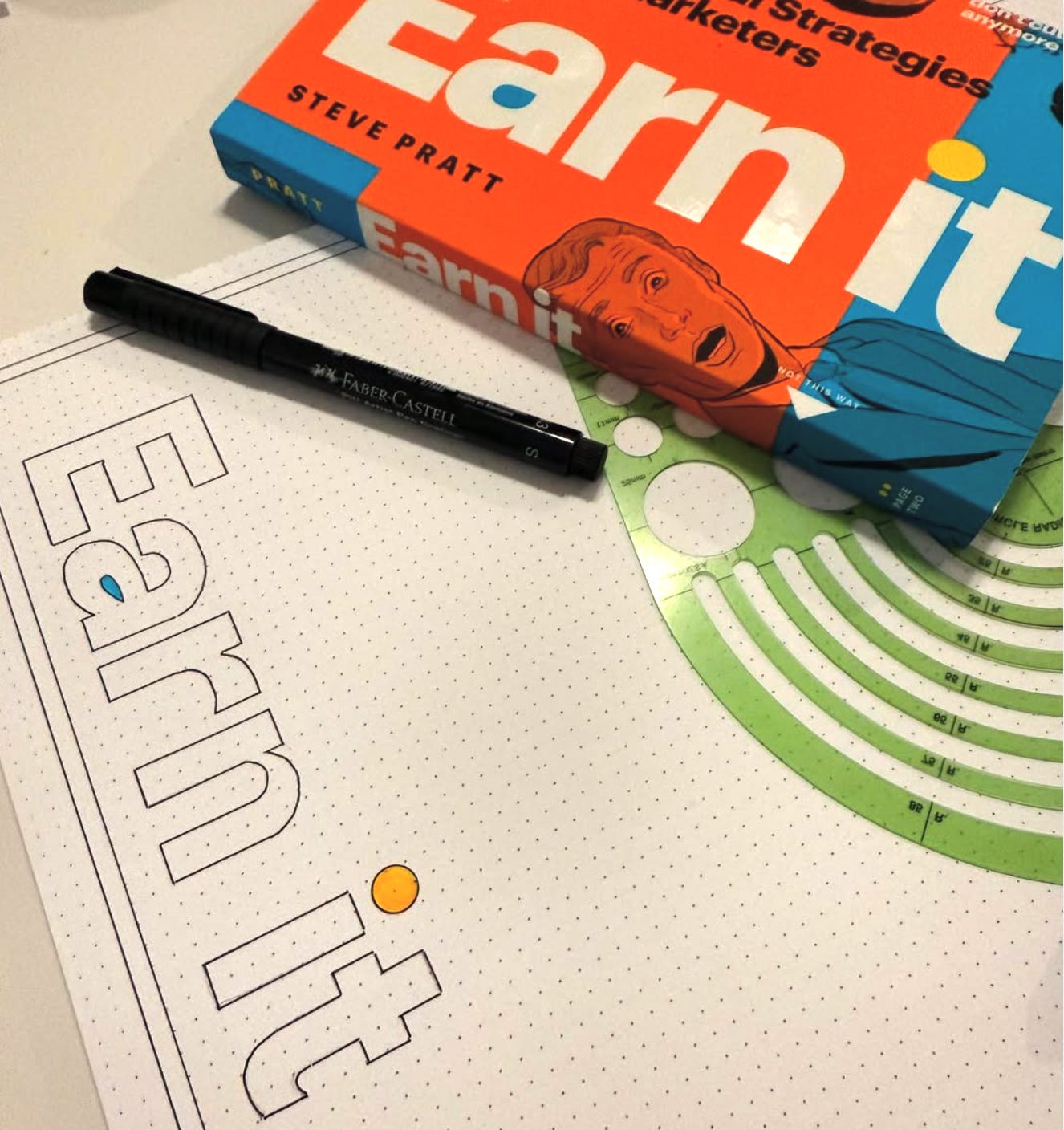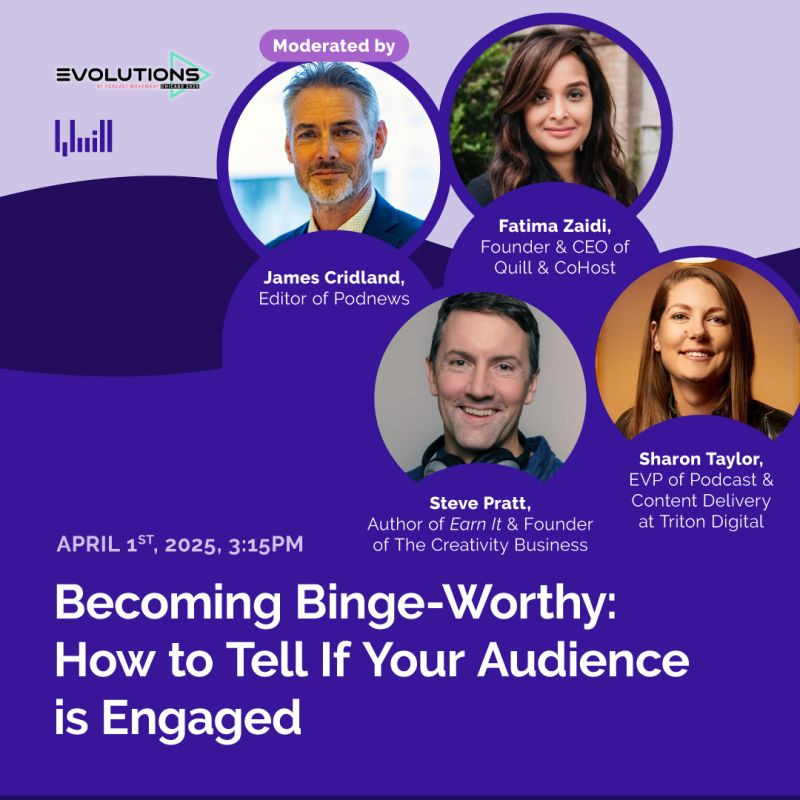Welcome to the Creativity Business, a newsletter about earning attention and differentiating yourself as a marketer or content creator. If you’re not a subscriber, sign up and get content & differentiation strategy delivered to your inbox every two weeks for free.
If you’re a content creator or a marketer, how valuable would it be if one activity could help you:
Unblock creativity
Ditch perfectionism
Generate endless ideas
Collaborate better
Tell stronger stories
Adapt to unforeseen changes
Read and respond to your audience
Find creative flow
Build confidence
I have exciting news—anyone can open up this entire world of creativity… if you’re brave enough to enter the world of improv comedy.
These creative skills are a secret, and they’re also not a secret. Here’s why…
Corporate Improv vs Creative Improv
Corporate improv workshops have been popular for a long time, and with good reason. They promise to help you and your colleagues learn teamwork, collaboration, and communication skills that can make a real difference in a corporate work environment. This value of improv is not a secret at all.
What I haven’t seen broadly adopted yet is an improv workshop designed for people who work in content creation, content marketing, or brand storytelling. And if you think improv is great for team building in an office, you will be blown away by how effective improv skills can be in a purely creative environment. Improv in this context still feels like a really valuable secret.
I should briefly explain how I know this all to be true.
Improv Changed My Life
When I was at McGill University (a long time ago), my friend Colin and I joined a campus improv group called (of course) McGill Improv, and I was instantly hooked. We performed weekly at the campus pub and practiced every weekend. After graduating, a group of us started a troupe in Toronto, performing weekly shows at a bar called the Muddy York.
Not only was it some of the most fun I’ve ever had, but doing improv was directly responsible for a huge number of skills that allowed me to have a creative career in TV, radio, podcasting, and speaking.
One of my early television gigs was acting/directing/producing a show for tweens called Roadcrew, and it was shot a lot like Spinal Tap or Best In Show with one major difference. Instead of being complete fiction, Roadcrew featured a set of fictional characters having adventures in the real world with real people, so maybe it was more like Borat for kids 😜. We created a rough skeleton of the plot, but almost all the actual scenes were improvised because they involved non-actors in real-life situations. It was one of the best creative experiences of my life, and my improv background could not possibly have been more critical.
Since then, I’ve done a lot less actual improvising, but the improv skillset continues to be extraordinarily valuable in the world of content creation and marketing.
What are these secret skills? There are honestly too many to put in a single newsletter—it could probably be a book! Here are some of my favourites:
Letting Go of Control
When most people think of improv, they think about performers asking for suggestions from the audience before a scene starts. It’s almost like getting suggestions is proof that nothing has been prepared in advance and that there is no safety net for anyone on stage.
Creatively, having to build scenes, stories, and characters that incorporate suggestions from the audience in real-time is an amazing skill to develop. If you are a perfectionist or someone who likes to plan everything out to reduce uncertainty, improv is both uncomfortable and liberating… because you can’t do any of that.
The biggest lesson beginning improvisers learn is that the more you try to control a scene, the more you try to think ahead and plan what is going to happen… the worse the scene becomes. The magic skills in improv are actively listening, reacting in real-time, and getting comfortable with spitting stuff out of your mouth before you can think about it.
One of my favourite games is called “Should’ve Said.” After any line of dialogue, the audience can yell out, “Should’ve said!” and the improviser has to provide an alternate line to replace the previous one. Sometimes, the audience will yell “should’ve said” two or three times in a row, forcing you to keep coming up with new directions for the scene over and over again. It literally makes it impossible to plan anything in your head and forces you to stay in the moment. It also teaches you the infinite ways a story can unfold depending on differing character choices.
Takeaway: Can you make a conscious effort to release control and fully explore options without judgment? If you are committed to a certain path and it’s not working, where are the opportunities for a “should’ve said” moment of going in the opposite direction?
Forced Constraints
At the same time, you have to keep in mind the constraints that you’ve been given. So it’s this amazing high-wire act of trying to not plan, while also looking for opportunities to incorporate the suggestions or constraints in a clever way.
If you’ve ever watched improv, you might be familiar with some games rooted in creative constraints:
In A, With A, While. This is the most basic form of a scene with audience suggestions. The crowd suggests a location (In A…), an object (With A…), and an activity (While…) and the actors have to build a scene with those constraints. How would you handle suggestions like, “In a diner with a gorilla while knitting”? Or “In a sauna with a clown while getting a haircut”?
First Line, Last Line. The audience provides both the first line of the scene and the last line of the scene. The improvisers’ job is to find a path from the opening line to the closing in a compelling scene.
As improvisers get more experienced, they will often gleefully impose constraints on one another. Can you imagine being in front of a crowd of people and another actor says to you, “I know you’ve been working hard on that slam poetry piece about ham sandwiches. Why don’t you do it for me now so you can practice?” You have no option but to make up a poem about ham and perform it. Gah! It’s a joy for the improvisers and the audience when this happens, but the first few times someone does it to you, it’s terrifying.
Takeaway: How can you impose constraints on your creative project to generate more unusual ideas or narrative paths?
Say YES and Build on the Ideas of Others
The core skills in improv are also the core skills in creative collaboration.
The first rule most people learn in improv is to say “YES” every time an offer is presented. Saying “no” to an offer is called blocking, and it’s pretty much a cardinal sin on stage. For example, if one performer says to another, “I love your hat,” the other actor is blocking if they reply, “I’m not wearing a hat.”
Like great brainstorming, our job is not to judge ideas, but instead to say yes, explore them and build on them. Saying “yes” is another way to force everyone to let go of the desire for control.
Takeaway: How can you say “YES” more often and explore ideas in an open-minded way?
The Need for Conflict
Conflict is one of the core skills you learn very early as an improviser because stories without conflict are generally pretty boring.“Garth and Susan love working together and always find great, collaborative solutions” is not a story—it’s a sleep aid.
Thinking about how to introduce problems and challenges as early and often as possible in stories or scenes instantly makes them more compelling.
“Garth is a big, loud extrovert who loves breaking the rules, and Susan is an introverted process and operations wizard. They’re both aiming to get the open VP job, they don’t like each other, and they have been assigned to collaborate on a huge project.” WAY more interesting!
Another way to find potential conflict is to consider each character's status in a scene. There is immediate tension if one character is very high status and the other is very low status. There is also immediate tension if two characters are both trying to be the highest-status person in a scene.
Takeaway: If your stories aren’t as compelling as they could be, how can you think about adding more conflict? Or making the conflict bigger? Or using status as a shortcut to conflict? Can you find ways to continually move the action forward with fresh problems and challenges?
Thinking Outside the Box
Too often in our creative work, we default to the most obvious or common solution to a problem. Improv can teach you how to see the same thing in new ways.
These two games will give you a sense of what I mean:
Uses. Someone in the audience offers up a real physical object. A group of improvisers on stage have to find as many alternate uses for that object as they can in a fixed period of time. So if someone tosses up a shoe on the stage, the shoe can become a phone, an iron, an oven mitt, a mousetrap, or anything else you can imagine.
Freeze. Two improvisers are on stage doing a scene while the rest of the group watches intently from off-stage. At any point, another actor can yell the word “FREEZE!” The actors on stage freeze, the person who yelled “FREEZE!’ comes in, taps out one of the actors, assumes their frozen position, and starts an entirely new scene that reinterprets the physical staging as something else. A scene with two people sitting next to each other on a bus ride can instantly transform into two people being trapped on a chairlift at a ski resort.
Games like this force your brain to look for unusual patterns or links. Developing the muscle to see non-obvious connections is a path to a true creativity superpower.
Takeaway: Can you use certain elements of your creative project in new ways? Are there new ways of seeing things that you might unknowingly be taking for granted?
Scene Variations
I LOVE formats. I’ve written about them and I include a section on formats in almost every talk and workshop I deliver. They are a magic differentiator for any kind of content. You can take the exact same information, add a format or a genre, and instantly get a significantly more compelling and original audience experience.
Improv taught me the power of genres and formats with a game called Genre Coaster. You take a few suggestions from the audience and begin a scene. At any point, someone in the audience can shout out the name of a genre or format and the scene has to instantly adopt it.
A scene about a couple trying to decide what to have for dinner could suddenly become:
A game show. (”The correct answer is vegetarian lasagna!”)
A soap opera. (”The last time we had onion soup was the day I found out about your affair with Mona…”)
A western. (”We better carb-load tonight… there’s gonna be a gunfight in the living room tomorrow at high noon.”)
A mystery. (”Something’s happened to the ground beef… it’s MISSING!”)
You get the idea. Adding a genre or a format instantly adds an element of familiarity for the audience and the opportunity for creative fun in how you tell the story. It also teach you to innately understand how stories change when different genre conventions are applied to them.
There is a game called “Emotional Rollercoaster” that works in a similar way. Let’s say there’s a scene where a mother is teaching her daughter how to drive a car. Imagine how differently the scene could evolve if the audience changed the dominant emotions from nervousness to panic to anger, or from meditative to supportive to glee.
Exploring a variety of emotions opens up a huge number of different narrative paths, and it’s fun for the characters to have to justify those emotions.
Takeaway: How would your project change or evolve if it took on an alternate genre? How would the story evolve differently if you endowed characters with an alternate set of emotions?
Why are these particular skills so valuable for creatives? Too often, we are trapped by the way we always do things, or the way the industry always does things. Sometimes, we can’t see new opportunities or solutions because we have too much experience or comfort.
Improv is a way to let go of your brain’s desire to be rational and to limit uncertainty. It’s a way to get comfortable with taking risks—personally, as a team, and creatively. And the rewards for risk-takers are significant: these skills consistently generate novel solutions and open up unexplored opportunities.
New ideas, unexpected stories, and surprising turns attract our attention and interest. And if you’re in the business of creativity, isn’t that the desired and most valued outcome?
The good news is that you don’t need to do improv to start incorporating this mindset. However… if you really want to do something bold and risky, maybe you should dare to say “YES” and take your team to an improv workshop to give this stuff a try.
What’s Earned My Attention Recently
This video has been shared A LOT in Canada this past week, but in case you haven’t seen it, this is a really positive, affirming approach to a campaign ad that is a welcome reprieve from negative attack ads. It’s also a perfectly timed celebration of Canadian identity during a surreal time for all of us up here.
Speaking of managing uncertainty up here in Canada, A Love Affair with the Unknown is an amazing new newsletter from my friend Gill Deacon. (Stay tuned for a forthcoming podcast and book, too!) I first met Gill doing improv at McGill and for me, the phrase “a love affair with the unknown” perfectly captures the magic of improv, even though Gill’s current focus is about exploring our relationship with uncertainty, whether is it societal (like COVID or politics) or personal (health, relationships, etc). She is a terrific writer and a wonderful person and I’m CERTAIN you will enjoy her uncertainty content.
, author of Writing That Doesn’t End in Questions, and Laura Palmer, producer of the hit podcast series Island Crime, have whipped up an exciting new podcast to address Canada’s brand-new existential crisis. Elbows Up is the podcast I never thought Canadians would need, but as it turns out… we do. I’m so glad that they are producing this.Earn It Updates
I was recently tagged on Instagram by Dani Saveker, who creates beautiful visual synopses of books she is reading. Over several posts, she detailed her process of making a visual synopsis of the big ideas in Earn It before revealing the gorgeous finished product. Thank you, Dani—it’s brilliant!
Earn It was featured in BookLife’s Cover Crush article, which makes me very happy. The amazing Peter Cocking at Page Two did phenomenal work on the entire design of the book and it really stands out on a crowded bookshelf. I regularly get comments about what a memorable and distinctive cover it is, which could not be better feedback for a book about earning attention! Congratulations and thank you, Peter!
On The Periphery podcast - thanks to Steven Cox for having me as the first guest on his new podcast and talking about how to approach this new creative project. If you’re in Vancouver, Steven is hosting a great live event on April 23rd with some terrific speakers.
I had a ton of fun speaking about how to get invited into heavily defended Attention Forts and also why you consider trying to be the ONLY ONE doing what you’re doing at the Radiodays Europe conference in Athens. (Write up here and here!) They put on an amazing three days of programming and are brilliant event organizers - thanks for having me!
NO JOKE! I’m going to be in Chicago at Podcast Movement Evolutions on April 1 and 2. On April Fool’s Day, I’m on a panel with Fatima Zaidi, James Cridland, and Sharon Taylor about how to create binge-worthy shows, and on the 2nd, I’m talking about why and how to Do The Opposite of everyone else, stand out from the crowd, and be the ONLY ONE doing what you’re doing.
Just writing this email about improv skills and games has inspired me creatively and I hope it has done the same for you!
Thanks for reading - talk soon!
Steve








Fantastic, Steve. I love that you differentiate corporate vs creative improv and introduce us to new ways of thinking, approaching our work, collaborating (yes, and!) and thinking outside the box - great read!
Great read. I’m also a broadcaster and an improviser. This is a reminder of how valuable it is to keep with it — doing improv certainly helps me open my mind and think quickly!